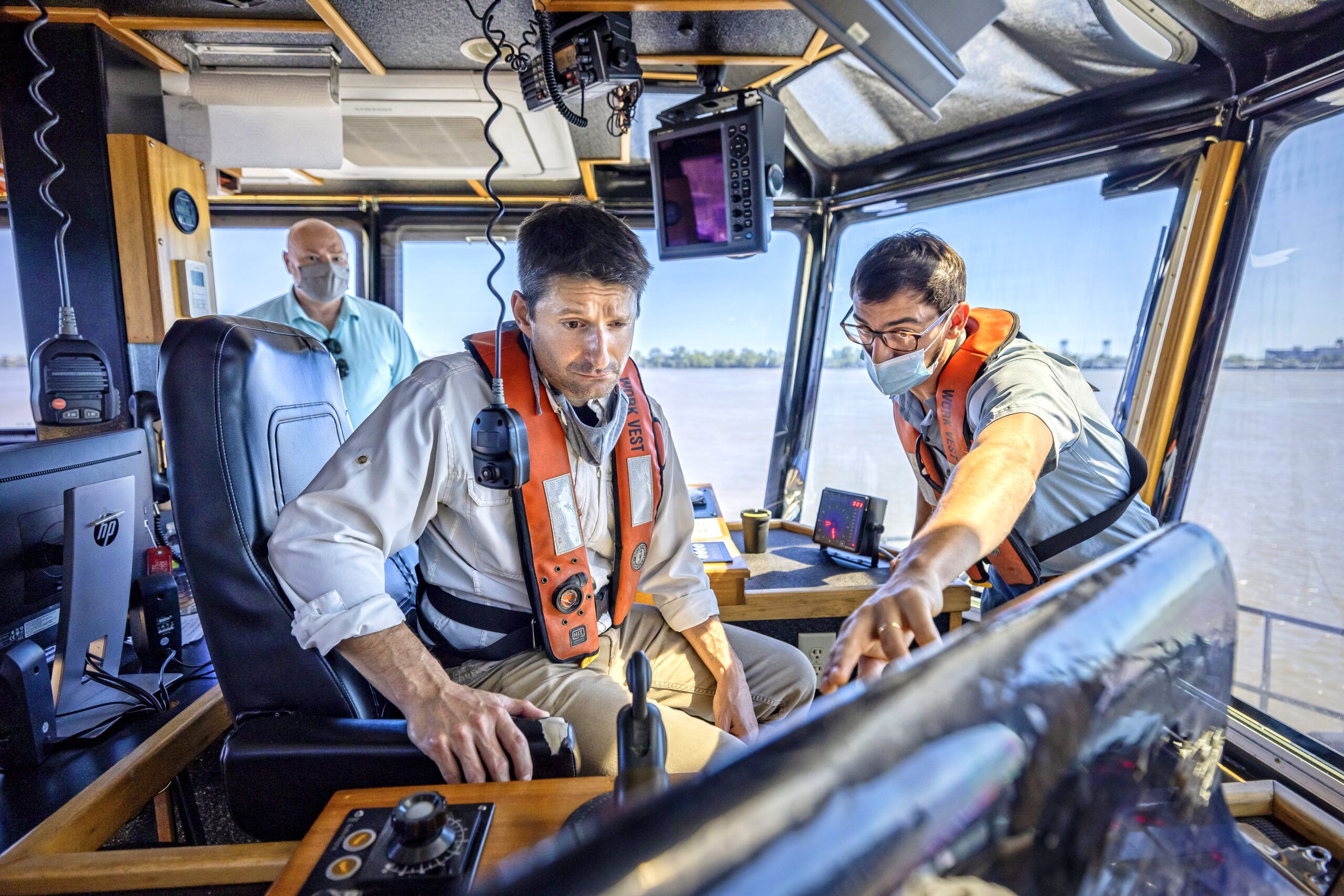
The Water Campus ‘Smart Port’ dashboard is rapidly becoming a vital tool
for data sharing of river conditions, eliminating delays and saving money.
The technology behind the groundbreaking “Smart Port” initiative launched last year at The Water Campus in Baton Rouge was already out there.
It was just a matter of connecting the dots, says Justin Ehrenwerth, president and CEO of The Water Institute of the Gulf.
Still in its early stages of development, Smart Port will ultimately serve as a crowd-sourced technology dashboard that will gather data from tugboats and other working vessels to create an accurate real-time depiction of sediment buildup, or shoaling, in the Mississippi River.
The dashboard will then provide the eight ports from north Louisiana to Venice with a real-time shoaling tool and customized resiliency strategies. It will also allow any port or stakeholder on the river to access local weather forecasts, road traffic conditions coming in and out of the port, and river traffic conditions.
It’s a true multidisciplinary effort being coordinated at The Water Institute by project manager Jason Curole and lead principal investigator Mike Miner.
The idea was born out of an informal meeting in 2018 between Ehrenwerth and Port NOLA’s President/CEO Brandy Christian and then Vice President Bobby Landry. They described to him a serious recurring dilemma in tracking sediment buildup in the river. While survey vessels tracked the river depths on a periodic basis, that did little good for river pilots who needed information in real time.
“In areas of sediment buildup, they didn’t have the draft they needed,” Ehrenwerth says. “They’d then have to get an emergency dredge, a process that took as long as 16 days and cost a significant amount of money.”
Fortunately, the Water Institute had been studying the movement of water for years, so Ehrenwerth saw an opportunity for collaboration. Back at home, his staff began working on a unique idea: Why not develop a crowd-sourcing application similar to those used for road traffic?
The problem, he says, boiled down to a lack of data and analytics. “All of the tugs, barges and working vessels were constantly beaming a signal to the bottom of the river and getting a reading,” he says. “But no one was doing anything with that data, so we built an application and used the tugs around Port NOLA to get a ‘crowd-source’ view of the river bottom.”
Port NOLA sponsored a $250,000 pilot project and recruited 12 vessels from Crescent Towing of New Orleans to participate. “We put the app on those vessels and it was overwhelmingly successful,” Ehrenwerth says. “In the process, they continuously harvested time, location and depth. We just wanted to know what the bottom of the river looks like as that boat is going over it.”
As a next step, the Water Institute began “cleansing the data” by using machine learning and artificial intelligence methodologies. “We basically took the survey vessel data and compared that to the data from the tugs and over time the AI was able to ‘train’ the model,” he adds. “The result is cleaner data that gives us a bathometric math product that shows us what the bottom of the river looks like in real time.”
The Smart Port initiative has two essential areas of focus: a real-time shoaling forecast development and the creation of resiliency strategies for the eight ports. The Water Campus has since been approved for a $3 million grant from the U.S. Department of Commerce’s Economic Development Administration that will significantly expand the scope of the project to include the entirety of the river from the Arkansas-Louisiana border to the Gulf of Mexico.
And there’s no reason for the shoaling tool be limited to a particular geography, Ehrenwerth adds, as similar problems are experienced on every major waterway in the world. “We’re already receiving phone calls from other countries where they’ve read about this initiative.”
Smart Port’s physical center will be at 1200 Brickyard Lane within The Water Campus and will allow the eight ports to collaborate, creating a space for the Water Institute to improve the dashboard’s analytics and data and serving as a backup emergency operations center. The estimated completion date of the project is summer 2023. The physical space will yield other benefits, as other partners at the Water Campus will likely capitalize off the arrangement.








